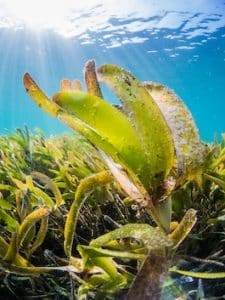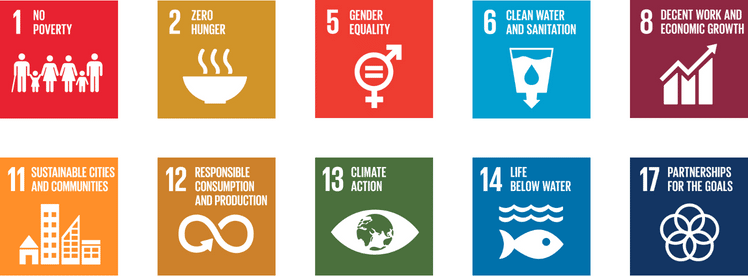Often described as the ‘lungs’ of the sea, seagrass is a vital part of the seascape. This marine flowering plant is found in shallow waters and hosts a spectacular array of sea life, providing multiple benefits for life above and below water.
However, this often-overlooked plant is under threat. To highlight the important role it plays, the United Nations is officially marking World Seagrass Day for the first time on 1 March, 2023. Here are 10 facts about this essential plant.
1. Seagrass can be found all over the world, from the tropics to the Arctic circle
Swaying gently beneath the ocean surface, seagrass is found in the coastal regions of 159 countries on six continents, covering an area of around 300,000 km2. More than one billion people live within 100 km of a seagrass meadow.
2. There are 72 different seagrass species in the world
Seagrass, which is not the same as seaweed, evolved over 70 million years ago from terrestrial grass. In Europe, examples of seagrass include Zostera marina and Zostera noltii, commonly known as eelgrass. They can often be found in sheltered areas such as harbours, estuaries, lagoons and bays.
3. Seagrass is essential for marine biodiversity
Seagrass meadows provide food and shelter for sea life, including endangered species such as seahorses and turtles. The plant keeps oceans clean and healthy by absorbing harmful nutrients and reducing the incidence of pathogenic marine bacteria by 50%. Seagrass also works as an acidification buffer, protecting vulnerable ecosystems and species, such as coral reefs.
4. Seagrass is also vital for life on land
Seagrass may live underwater, but this does not prevent it from improving our life on land. Seagrass meadows play an important role in protecting our coastal areas from erosion, storms and floods as they absorb the impact of waves.
Seagrass meadows are also home to many of the fish we eat, including cod and pollock. Many industries such as fishing and tourism depend on seagrass — 20% of the world’s biggest fisheries are supported by this marine plant.
Seagrass is also used as an ingredient in a wide range of goods and services, from pharmaceuticals to materials and food such as Japanese sake.

5. Seagrass can help us tackle climate change
Seagrass helps mitigate the effects of climate change through carbon sequestration. Despite covering only 0.1% of the ocean floor, seagrass meadows are incredibly effective carbon sinks and store up to 18% of the world’s oceanic carbon.
6. Seagrass meadows are among the least protected coastal ecosystems
Only 26% of recorded seagrass meadows fall within marine protected areas, compared with 40% of coral reefs and 43% of mangroves.
7. Seagrass has been declining globally since the 1930s
Almost 30% of global seagrass areas have been lost since the late nineteenth century. An estimated 7% of this vital habitat disappears each year. This is equivalent to losing a football pitch of seagrass every 30 minutes.
8. Human activity is threatening seagrass
The main threats to seagrass meadows include urban, industrial, and agricultural run-off; coastal development; dredging; unregulated fishing and boating activities; and climate change.
9. Seagrass can help us achieve the Sustainable Development Goals
Seagrass conservation and restoration projects are associated with several SDGs, including the following:

For instance, seagrass contributes to climate change mitigation through carbon sequestration and storage (SDG 13) and supports a wealth of marine biodiversity (SDG 14). Hundreds of millions of people are dependent on seagrass for their daily protein needs (SDG 2); women play a central role in the management and safeguarding of seagrass ecosystems (SDG 5); and seagrass is a filter for pollutants (SDG 6). The plant protects communities from natural disasters (SDG 11) and it supports livelihoods through fisheries and tourism (SDGs 1 and 8).
10. A global effort to restore seagrass is beginning
As part of the UN Decade on Ecosystem Restoration, a worldwide push to revive natural spaces is underway. Reversing the decline of seagrass will take an international effort. From Gazi Bay, in Kenya, to Maputo Bay, in Mozambique, all the way to Dale Bay in Wales, seagrass restoration projects are gathering pace.
Find out more:




